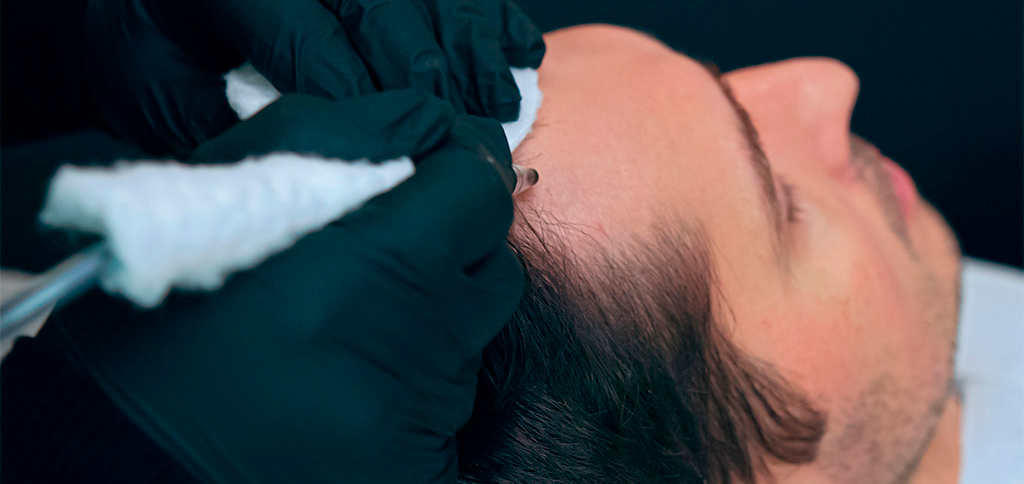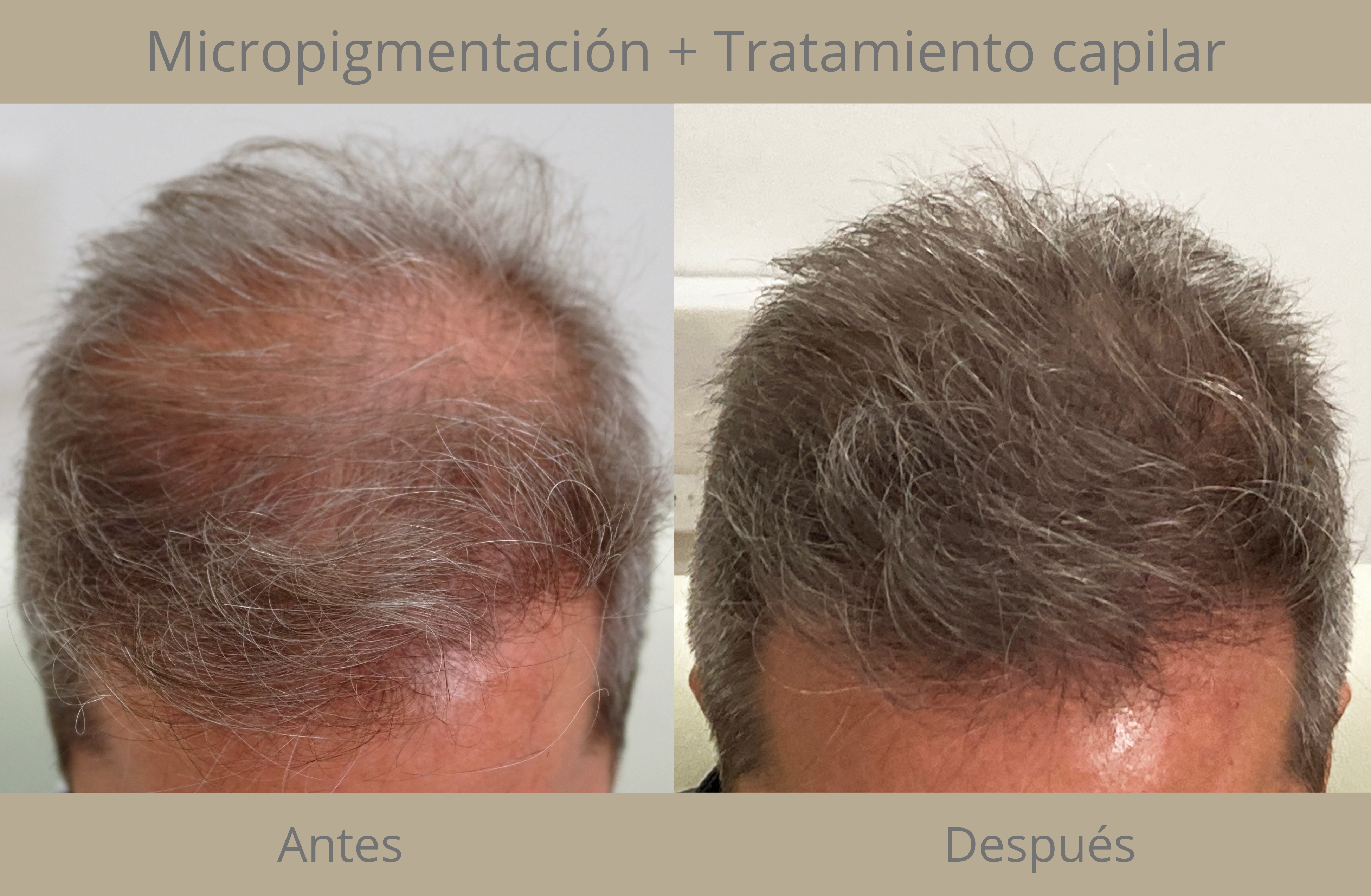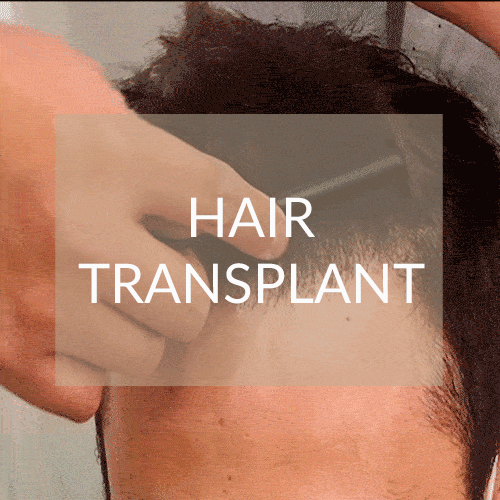Capillary micropigmentation in Madrid
Scalp micropigmentation in Madrid is an increasingly in demand service, used to improve the hair’s appearance. It is an aesthetic procedure for hair, complementary to capillary grafts, and hair medicine treatments such as PRP (Platelet Rich Plasma) or mesotherapy.
Trichopigmentation, as capillary micropigmentation is also known, can help visually improve the results after a hair transplant.

What is capillary micropigmentation
It is a technique in which pigments are injected under the skin (scalp), through which we achieve a capillary density effect similar to that caused by the hair itself. The pigment is injected to a depth that varies between 0.25 and 1.75 mm and simulates the color of the hair.
This method has become famous for being applied to the head, but it can also be applied to the eyebrows, lips and even the areolas of the breasts..
Scalp micropigmentation is not a tattoo. Nor does it improve the hair in any way, for this reason it is important that a doctor determines if the patient is a candidate for this procedure or if, on the contrary, they need hair treatments to strengthen the hair follicle. Many times it is usually a combination of both.
We can consider that capillary micropigmentation is a merely aesthetic treatment.
How is micropigmentation performed?
At first, the specialist makes a design of the capillary micropigmentation and divides its undertaking into different phases. Then, the pigments will be injected into each of the designated areas until the treatment is completed.
It is very important to carry out a pigment test beforehand to determine that the patient doesn’t have an allergy to the ink. Approved and high-quality pigments must be used so that the color is the most similar to the patient’s hair and does not change color over time.
How long does it take to perform capillary micropigmentation?
It depends on the situation of each patient, but it is usually carried out in several sessions of between 2 to 4 hours each. The size of the head and the goals that the micropigmenter has set will determine how many hours and sessions are necessary.
Duration of capillary micropigmentation
When the sessions of this procedure are finished, the result does not last forever. It is necessary to review it from time to time, since the pigments end up being eliminated by the body. Being a new technique, the studies that have been carried out to date, guarantee that, depending on the patient they can last from 2 to 7 years.
When is micropigmentation recommended?
Micropigmentation is recommended for patients who wish to have more capillary density and cannot undergo a hair graft due to not having an optimal donor area.
Micropigmentation care
Scalp micropigmentation does not require too much special care. However, in the days after treatment, it is convenient to:
□ Avoid scratching the scalp or removing the small scabs produced by the treatment.
□ Wash the hair from the third day.
□ Protect yourself from the sun for at least seven days.
It is common for the patient to experience a slight inflammation of the scalp. In turn, it is possible that some pores expel small excesses of the introduced ink, although in no case will it affect the final result.
During the first few days, the scalp will generate a slight crust with a darker tone than desired, although once it falls off, the color will lighten little by little.
Around three weeks after undergoing micropigmentation, the necessary collagen is generated so that the scalp finishes healing definitively, and around ten or twenty days after the process, the desired tone is achieved.

Results of capillary treatments
The price of capillary micropigmentation in Madrid
The cost of capillary micropigmentation varies depending on each patient. We have to carefully observe your hair condition, the area to be covered or how many subsequent sessions will be necessary.
At Instituto Médico del Prado Dr. Espinosa Custodio will carry out his diagnosis to determine if you are a suitable patient for tricopigmentation.
Diagnosis
Instituto Médico del Prado has a closed agenda for this treatment.







